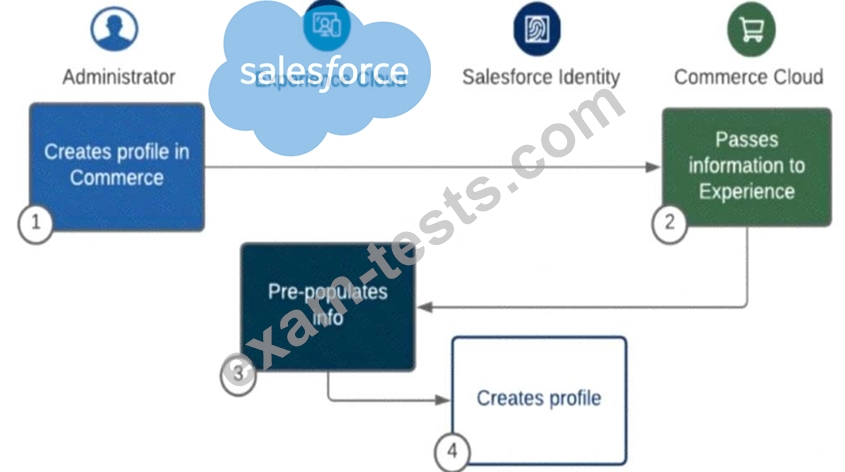Question 56
Northern Trail Outfitters (NTO) wants to unify customer data with a single identity for each customer across their ecommerce sites and their communities. Communities are treated as an identity provider (IDP) for commerce. The communities also allow self-service support for products via knowledge articles and crowd-sourced Knowledge and Chatter.
For which customer data should Experience Cloud be the system of record?
For which customer data should Experience Cloud be the system of record?
Question 57
As part of a digital transformation initiative. Universal Containers (UC) wants to start a new project to implement Salesforce Platform, Marketing Cloud, and B2C Commerce. They have mapped the requirements and captured the user stories, including non-functional requirements. Almost all requirements touch all three clouds.
UC wants to go-live with all functionality in three years, but the executive team would like to see the benefits and return on investment sooner than that.
What should the Solution Architect recommend in order to align with the executive team's request7
UC wants to go-live with all functionality in three years, but the executive team would like to see the benefits and return on investment sooner than that.
What should the Solution Architect recommend in order to align with the executive team's request7
Question 58
Universal Containers (UC) uses B2C Commerce, Marketing Cloud, and Salesforce OMS for their online sales capabilities. Given recent logistics constraints and challenges, many customers are asking UC for the ability to make their purchases online but pick them up at a local store or location (BOPIS).
Which consideration should a Solution Architect keep in mind when designing a solution for UC that would allow for this functionality?
Which consideration should a Solution Architect keep in mind when designing a solution for UC that would allow for this functionality?
Question 59
Refer to the image below:

A brand is planning to re-platform their existing website onto B2C Commerce. As part of the re-platform they will create a new social community portal. They are going to implement B2C Commerce, Experience Cloud, and Salesforce Identity.
After reviewing the workflow, which system should a Solution Architect recommend to use as a primary authentication method while attempting to minimize migration of customer profile data?

A brand is planning to re-platform their existing website onto B2C Commerce. As part of the re-platform they will create a new social community portal. They are going to implement B2C Commerce, Experience Cloud, and Salesforce Identity.
After reviewing the workflow, which system should a Solution Architect recommend to use as a primary authentication method while attempting to minimize migration of customer profile data?
Question 60
A company uses B2C Commerce to capture customer orders and then uses an ETL tool to send the orders to an ERP system for processing. The company also uses Service Cloud and would like to display the processed orders in that system as well, in case their service reps need to refer to an order. However, the order data itself does not need to be copied.
Which tool can a Solution Architect use to meet this requirement?
Which tool can a Solution Architect use to meet this requirement?

